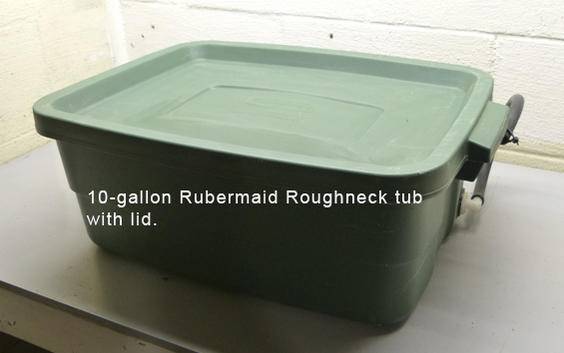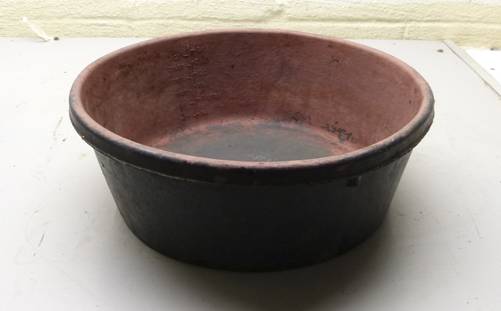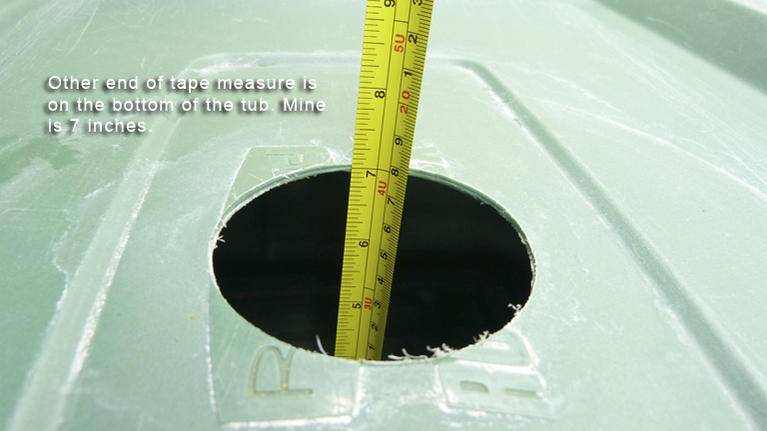Rocketman64
Member
Credit for developing the growing system known as the Passive Plant Killer goes to a member here on ICMAG. delta9nxs is the one responsible for putting together this type of simple, rock-solid approach to hydroponic growing. This tutorial will demonstrate how I built a mini version of what Delta uses to grow astonishing, healthy and huge-producing plants. I tried to mimic his technique as closely as possible using just what I had on-hand.
My system isn't nearly as expansive as Delta's so my approach allows me to follow the general guidelines without being too precise. I would encourage anyone interested in this technique to visit Delta's grow threads to become familiar with the science involved here. Most of those details will not be covered in this tutorial. The following is a rough, step by step pictorial showing my basic hardware assembly for the Mini PPK I built.
Sorry, no item list:
I'm not providing a specific item list for things needed because it's easy enough to substitute what you have on hand for what I've used. I'm not one to buy anything new if I have something similar available for free. To me, that's the beauty of DIY projects. If you're reading this and are interested in the project, I'll assume you have already taken on DIY projects in the past, therefore, I will not bore you with science details, specific measurements or even what drill sizes to use for what I've built.
Start like this:
Find yourself a ten-gallon Rubbermaid tub or something similar. Make sure it's opaque, allowing no light to penetrate to the nutrient solution. Your container should also have a fairly sturdy lid that snaps onto the container. The lid will serve to hold your growing container full of grow media and the plant itself so make sure it can handle some weight. If not, add some braces underneath for added support.

Go get your drill, jig saw or whatever tool you need and cut a 3-inch hole in the center of the lid of your container. I've done this with a pair of tin snips before, sturdy scissors may work as well.

Decide on a growing container:
It's really tough to beat this one:

This is a recycled rubber livestock feeding dish found at Tractor Supply for $5. It's heavy-duty, drills and cuts well, solid black and is never, ever going to wear out. Can't find one? Find something else, not a big deal. The idea here is it must be opaque(light proof), should be wider than it is tall and should fit nicely on top of the lid of the 10-gallon tub you're using.
Find a piece of tubing with an inside diameter of 2 ½ inches and somewhere around 6 inches long. PVC is the obvious choice here and it's what I've used on mine. Use what you have but do make sure it is no smaller than 2 ½ inches inside diameter. After cutting the hole in the tub lid place it on the 10-gallon tub. Measure the distance from the lid surface to the bottom of the tub. Subtract roughly two inches from that measurement and cut your 2 ½-inch ID tube to that length.


My system isn't nearly as expansive as Delta's so my approach allows me to follow the general guidelines without being too precise. I would encourage anyone interested in this technique to visit Delta's grow threads to become familiar with the science involved here. Most of those details will not be covered in this tutorial. The following is a rough, step by step pictorial showing my basic hardware assembly for the Mini PPK I built.
Sorry, no item list:
I'm not providing a specific item list for things needed because it's easy enough to substitute what you have on hand for what I've used. I'm not one to buy anything new if I have something similar available for free. To me, that's the beauty of DIY projects. If you're reading this and are interested in the project, I'll assume you have already taken on DIY projects in the past, therefore, I will not bore you with science details, specific measurements or even what drill sizes to use for what I've built.
Start like this:
Find yourself a ten-gallon Rubbermaid tub or something similar. Make sure it's opaque, allowing no light to penetrate to the nutrient solution. Your container should also have a fairly sturdy lid that snaps onto the container. The lid will serve to hold your growing container full of grow media and the plant itself so make sure it can handle some weight. If not, add some braces underneath for added support.
Go get your drill, jig saw or whatever tool you need and cut a 3-inch hole in the center of the lid of your container. I've done this with a pair of tin snips before, sturdy scissors may work as well.
Decide on a growing container:
It's really tough to beat this one:
This is a recycled rubber livestock feeding dish found at Tractor Supply for $5. It's heavy-duty, drills and cuts well, solid black and is never, ever going to wear out. Can't find one? Find something else, not a big deal. The idea here is it must be opaque(light proof), should be wider than it is tall and should fit nicely on top of the lid of the 10-gallon tub you're using.
Find a piece of tubing with an inside diameter of 2 ½ inches and somewhere around 6 inches long. PVC is the obvious choice here and it's what I've used on mine. Use what you have but do make sure it is no smaller than 2 ½ inches inside diameter. After cutting the hole in the tub lid place it on the 10-gallon tub. Measure the distance from the lid surface to the bottom of the tub. Subtract roughly two inches from that measurement and cut your 2 ½-inch ID tube to that length.
Last edited:



